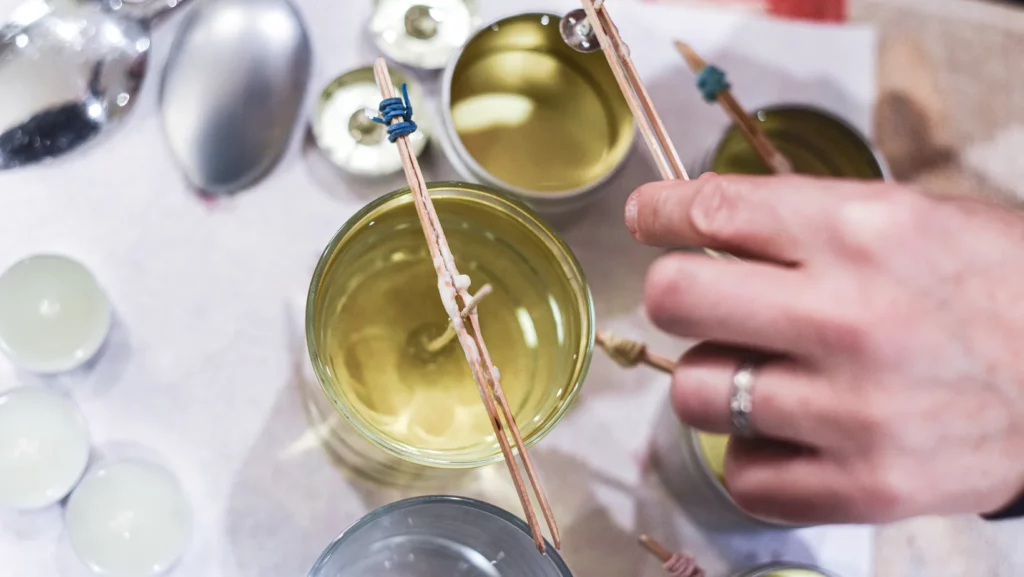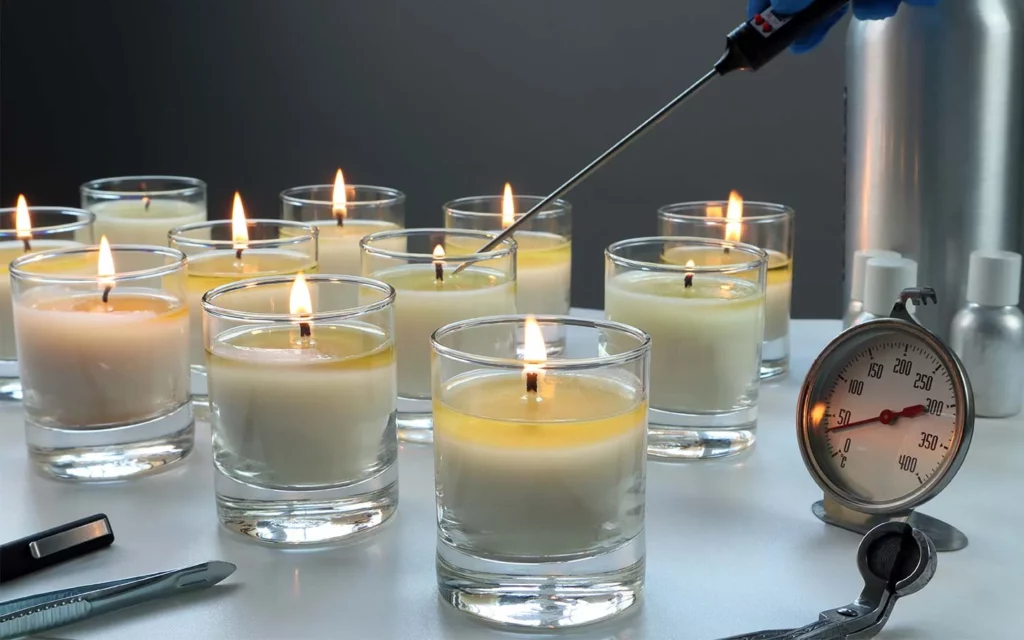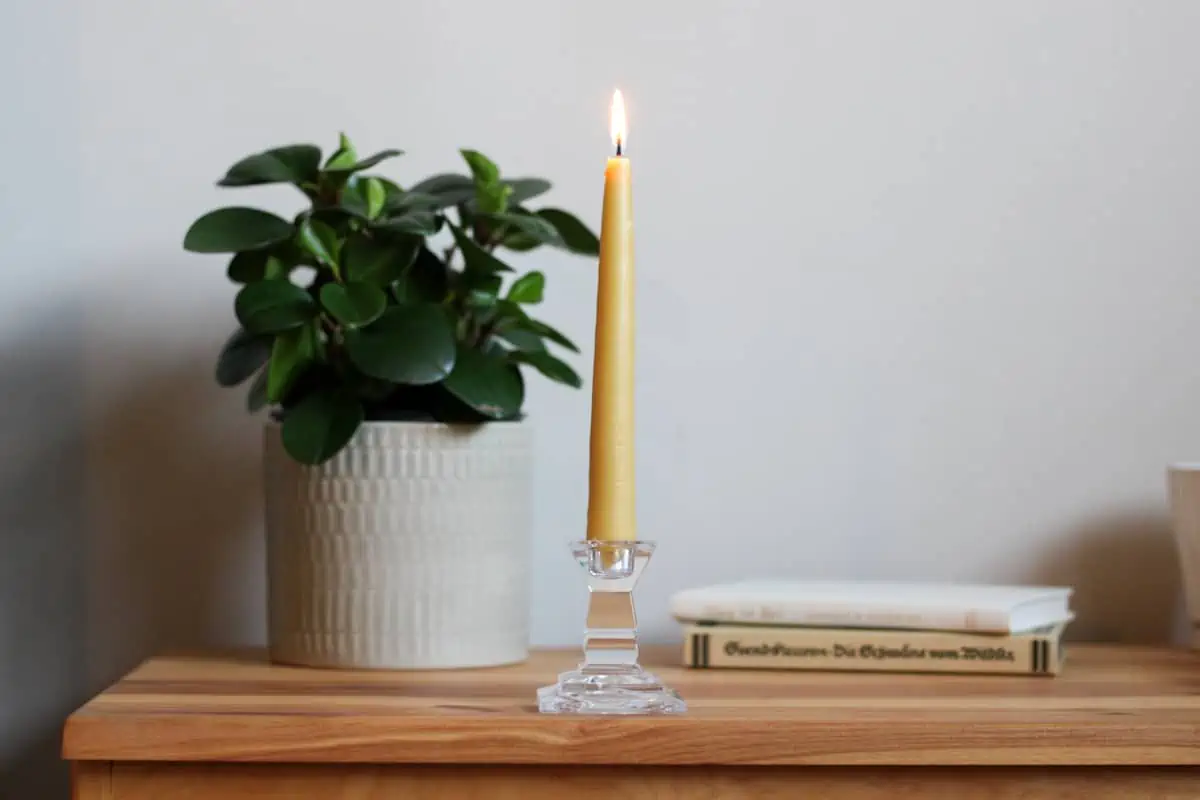Candles have been used for centuries in various religious, ceremonial, and decorative purposes. Whether you’re a seasoned candle maker or a newbie trying your hand at creating your own candles, choosing the right candle wicks is essential to ensure optimal performance and safety. The wick is the heart of the candle, responsible for creating the mesmerizing flame that brings warmth and ambiance to any space. In this article, we will dive into the importance of candle wicks, explore different types of wicks, discuss factors to consider when selecting a wick, and troubleshoot common wick problems.
Understanding the Importance of Candle Wicks
Candle wicks play a crucial role in the candle-making process. The candle wicks determine how the candle burns, how well it releases fragrance, and how long it will last. A wick acts as a fuel delivery system, drawing the liquefied wax up to the flame, where it is vaporized and creates the beautiful dancing light.
Choosing the right wick is a delicate balance between science and art. It involves considering factors such as the diameter of the wick, the type of wax being used, the presence of any additives like fragrance oils or colorants, and even the container in which the candle will be housed. Each of these elements can influence the wick’s performance and ultimately the quality of the candle. Learn more about essential candle wick supplies every crafter should have.
The Role of Wicks in Candle Making
In candle making, the wick is like the conductor of an orchestra, guiding the various components of a candle to work harmoniously. It helps to stabilize the flame, allowing for consistent burning and preventing excessive smoke or soot formation. A well-chosen wick ensures the candle burns evenly, avoiding tunneling or uneven pooling of wax.
Furthermore, the length of the wick also plays a crucial role in how the candle burns. A wick that is too long can cause the candle to burn too hot, leading to a shorter burn time and potential safety hazards. On the other hand, a wick that is too short may result in tunneling, where the candle burns straight down the center, leaving wasted wax along the sides.
How Wicks Affect Candle Performance
The size, material, and construction of a wick can greatly impact the performance of a candle. A wick that is too small may result in a weak flame, while a wick that is too large can lead to excessive soot or an overpowering flame. Additionally, the type of wax used in the candle and any added fragrances or dyes will also influence the optimal wick choice.
It’s essential for candle makers to test different wick options to find the perfect match for their specific candle recipe. This process of trial and error is crucial in achieving the desired burn characteristics, whether it’s a slow, clean burn for a relaxing atmosphere or a bright, hot burn for a festive ambiance.
Different Types of Candle Wicks
There are several types of candle wicks available, each with its unique characteristics and benefits. Choosing the right type of wick for your candle is crucial to achieve the desired burn and scent throw. Let’s explore some popular options:
Cotton Wicks
Cotton wicks are one of the most commonly used wicks in candle making. They are versatile and work well with various types of wax, including soy, paraffin, and beeswax. Cotton wicks are known for their clean burn, minimal soot, and stable flame. They come in different sizes to accommodate different candle diameters.
One of the reasons cotton wicks are favored by many candle makers is their ability to provide a consistent and even burn. This reliability makes them a popular choice for both beginners and experienced artisans alike. Additionally, cotton wicks are known for their excellent scent throw, allowing the fragrance of the candle to disperse effectively throughout a room, creating a pleasant and inviting atmosphere.
Wood Wicks
If you’re looking to create a unique sensory experience, consider using wood wicks. These wicks add an aesthetic appeal to candles and produce a soft crackling sound reminiscent of a cozy fireplace. Wood wicks are typically made from sustainable materials like cherry, maple, or birch. They work best in soy or coconut wax candles and require a bit of special attention during the candle-making process.
Wood wicks are not only visually appealing but also offer a longer burn time compared to traditional cotton wicks. This extended burn time allows you to enjoy the ambiance of your candle for a more prolonged period. The gentle crackling sound produced by wood wicks can create a soothing atmosphere, perfect for relaxation and unwinding after a long day.

Specialty Wicks
In addition to cotton and wood wicks, there is a wide variety of specialty wicks available on the market. These include zinc-core wicks, which are ideal for large or heavily scented candles, and paper-core wicks, which are often used in container candles. Explore these options to find the perfect wick for your specific candle type and preferences.
Factors to Consider When Choosing a Wick
While selecting a wick may seem overwhelming, considering a few key factors can simplify the decision-making process:
Choosing the right wick is essential for the optimal burning of your candle. Understanding the factors that influence wick selection can help you create a candle that burns evenly and efficiently, enhancing the overall candle experience.
The Size of the Candle
The size of your candle is crucial in determining the appropriate wick size. A larger candle will require a thicker wick to ensure proper fuel delivery, while a smaller candle will need a thinner wick. Choosing the right wick size will help achieve an even burn and prevent wastage of wax.
Additionally, the diameter of the candle vessel plays a role in wick selection. A wider vessel may necessitate multiple wicks to ensure an even burn pool, while a narrower vessel may only require a single wick. Consider the dimensions of your candle to determine the most suitable wick configuration.
The Type of Wax Used
Different types of waxes have varying melting points and characteristics, which can affect the performance of the wick. Soy and coconut waxes, for example, have a lower melting point than paraffin waxes. Consider the type of wax you are using and select a wick that is compatible with its specific properties.
Furthermore, the additives present in the wax, such as stearic acid or vybar, can impact wick selection. These additives can alter the way the wax behaves during the burning process, requiring a wick that can accommodate these changes. Be sure to account for any additives in your wax formulation when choosing a wick.
The Scent and Color of the Candle
If you’re adding fragrances or dyes to your candle, keep in mind that they can impact the burn characteristics. Some scents or colors may require a wick with a larger or smaller flame to ensure proper fragrance release and even burning. Consult the fragrance or dye manufacturer’s guidelines or conduct small test batches to determine the best wick choice.
Additionally, the opacity of the dye used in the candle can affect the burning process. Darker colored candles may absorb more heat, requiring a wick that produces a larger flame to compensate for the increased heat loss. Lighter colored candles, on the other hand, may benefit from a wick that burns at a lower temperature to prevent discoloration or fading of the dye.

Troubleshooting Common Wick Problems
Even with careful selection, candle wicks can sometimes pose challenges. Here are some common problems you may encounter and how to address them:
Wick Curling or Mushrooming
If the top of your wick curls or forms a mushroom-like shape while burning, it could be a sign that the wick is too large for the candle. Trim the wick to a shorter length to prevent excessive mushrooming and ensure a clean burn.
Wick Drowning Out
When a wick has trouble staying lit or keeps extinguishing itself, it may be getting suffocated by the wax pool. This problem can occur if the wick is too small or if the candle is burning too long without reaching a full melt pool. Trim the wick and allow the candle to burn long enough to create a full melt pool to alleviate this issue.
Wick Burning Too Fast or Slow
If your candle burns too quickly, it may require a smaller wick to slow down the burn rate. On the other hand, if the candle burns slowly or exhibits a weak flame, using a larger wick may help increase the burn intensity. Make adjustments to the wick size until you achieve the desired burn time and flame size.
Now, let’s delve a little deeper into the world of candle wicks. Did you know that the size and material of the wick can greatly affect the overall performance of your candle? It’s true! Different wick sizes and materials can produce varying flame heights, burn rates, and even scent throw.
For example, cotton wicks are a popular choice for many candle makers due to their clean burn and minimal sooting. They are available in various thicknesses, allowing you to customize the burn rate of your candle. On the other hand, wooden wicks offer a unique crackling sound reminiscent of a cozy fireplace, adding an extra touch of ambiance to your candle.
When selecting a wick, it’s important to consider the diameter and type of wax you’re using. A larger diameter candle will require a thicker wick to ensure an even burn, while a smaller diameter candle may need a thinner wick to prevent excessive heat and sooting.
Overall, choosing the right candle wicks is an essential aspect of candle making. By understanding the importance of wicks, exploring different types of wicks, considering various factors, and troubleshooting common problems, you can create candles that burn beautifully and enhance any atmosphere. Experiment, enjoy the process, and let the dancing flames captivate your senses.
